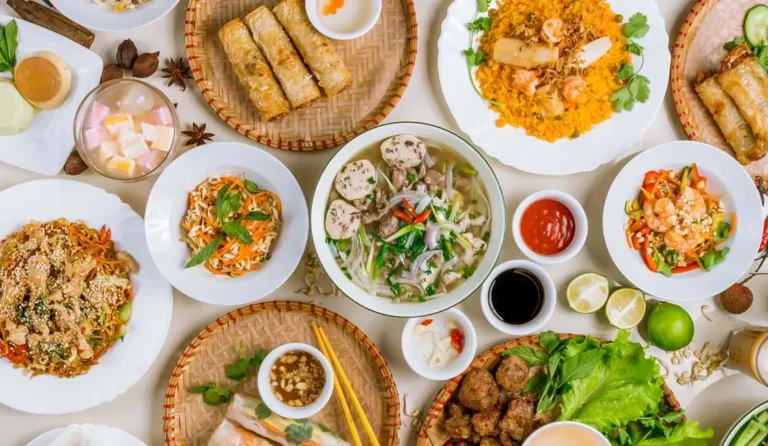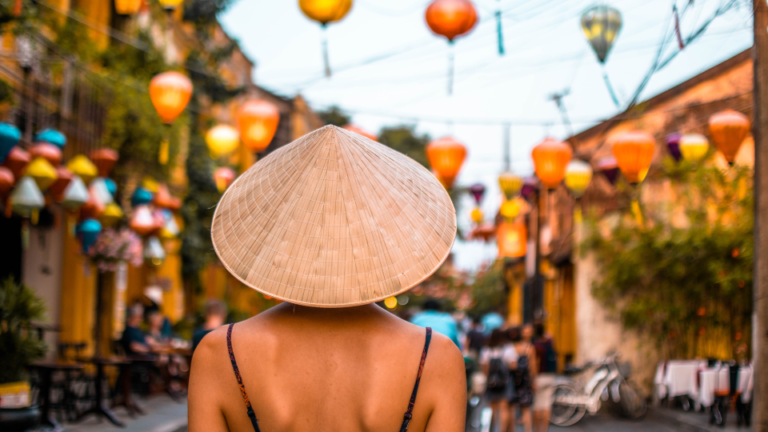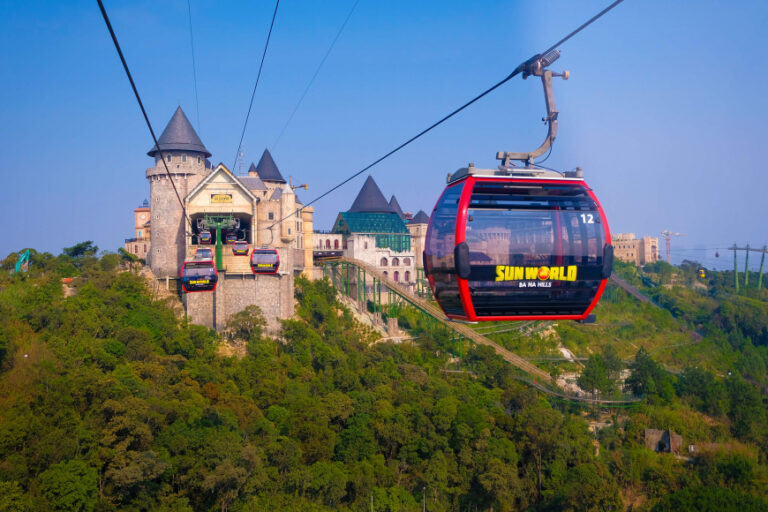Hanoi, the capital city of Vietnam, is a vibrant blend of old-world charm and modern energy. With its rich history, diverse culture, and mouth-watering cuisine, Hanoi offers an array of experiences that cater to all kinds of travelers. Whether you’re a history buff, a foodie, or simply looking to soak up the local culture, there’s something in Hanoi for you. Here’s a guide to the best things to do in Hanoi, brought to you by Star Vacations. For personalized travel plans, give us a call at 9582254235.
1. Explore the Old Quarter
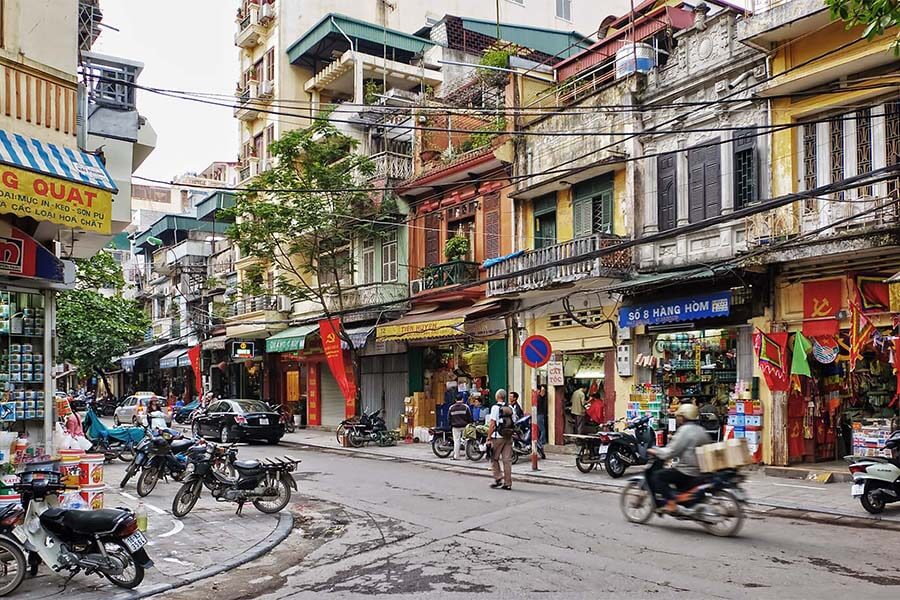
The Old Quarter is the beating heart of Hanoi, characterized by its narrow, winding streets that have been the city’s commercial center for a thousand years. This vibrant neighborhood is a sensory delight, bustling with activity and rich with the sights, sounds, and smells of daily life. Each street in the Old Quarter is named after the goods traditionally sold there, like Hang Bac (Silver Street) for jewelry or Hang Gai (Silk Street) for fabrics.
As you wander through the Old Quarter, you’ll find a mix of traditional shops and modern cafes, all housed in charming colonial-era buildings with their distinctive narrow, tall facades. The streets are lined with vendors selling everything from handcrafted souvenirs, silk products, and art to local delicacies such as pho (noodle soup), bun cha (grilled pork with noodles), and freshly brewed Vietnamese coffee.
The Old Quarter is also a fantastic place to experience Hanoi’s street food culture. You can sit on tiny plastic stools by the roadside, enjoying a bowl of hot pho or a crispy banh mi while watching the world go by. The vibrant nightlife in the Old Quarter is another highlight, with its numerous bars, pubs, and live music venues, making it a lively spot for both locals and tourists after dark.
2. Visit Hoan Kiem Lake and Ngoc Son Temple

Located in the center of Hanoi, Hoan Kiem Lake, also known as the “Lake of the Restored Sword,” is a serene and scenic spot that offers a welcome respite from the city’s hustle and bustle. Surrounded by lush greenery and bordered by tree-lined pathways, the lake is a popular spot for morning exercises, leisurely strolls, and people-watching. It’s common to see locals practicing tai chi at the break of dawn or gathering for a chat in the shade of the trees.
One of the lake’s most iconic features is the picturesque Turtle Tower, which stands on a small island in the middle of the lake. The tower is a symbol of Hanoi and is beautifully illuminated at night, creating a magical reflection on the water.
At the northern end of Hoan Kiem Lake, you’ll find the famous Ngoc Son Temple, situated on a small island. To reach the temple, you cross the charming red Huc Bridge, which means “The Rising Sun.” Ngoc Son Temple is dedicated to General Tran Hung Dao, a revered figure in Vietnamese history who led the country to victory against the Mongols in the 13th century. The temple is a peaceful place, filled with incense and ancient artifacts, offering visitors a glimpse into Vietnamese spiritual practices and a moment of tranquility amid the city’s hustle.
Exploring Hoan Kiem Lake and Ngoc Son Temple gives you a chance to experience the spiritual side of Hanoi and enjoy the city’s natural beauty in a serene setting. Whether you’re looking to take in the scenery, capture beautiful photographs, or simply relax, this iconic area is a must-visit on any trip to Hanoi.
3. Discover the Temple of Literature

The Temple of Literature, known as “Văn Miếu” in Vietnamese, is one of Hanoi’s most iconic historical and cultural sites. Built in 1070, this beautiful temple complex was originally dedicated to Confucius, the great Chinese philosopher, and later became Vietnam’s first national university. It served as a center of learning, where scholars came to study Confucianism, literature, and moral principles.
The Temple of Literature is a stunning example of traditional Vietnamese architecture, featuring red-tiled roofs, intricate wooden carvings, and serene courtyards surrounded by ancient trees. As you walk through its five distinct courtyards, you’ll encounter stone steles engraved with the names of graduates, symbolizing academic excellence and Vietnam’s rich scholarly tradition.
In the central courtyard, you’ll find the Well of Heavenly Clarity, a peaceful pond reflecting the surrounding trees and structures. The temple also houses the Pavilion of Constellation, a beautiful structure used for ceremonies and rituals. The Temple of Literature is not only a place to learn about Vietnam’s history and educational heritage but also a serene oasis in the midst of Hanoi’s bustling city life.
4. Experience the Ho Chi Minh Mausoleum Complex

The Ho Chi Minh Mausoleum Complex is a solemn and significant site dedicated to Ho Chi Minh, the beloved leader who played a pivotal role in Vietnam’s fight for independence. Located in Ba Dinh Square, the mausoleum houses Ho Chi Minh’s embalmed body, which lies in a glass case for visitors to pay their respects.
The mausoleum itself is an imposing marble structure, inspired by Lenin’s Mausoleum in Moscow, and stands as a symbol of Vietnam’s resilience and unity. Visitors are required to follow strict dress codes and maintain respectful silence while inside. The mausoleum is surrounded by lush gardens and walkways, adding to the solemn atmosphere.
Adjacent to the mausoleum, you can explore the Presidential Palace, a French colonial building where Ho Chi Minh lived and worked. Nearby, the simple stilt house where Ho Chi Minh spent his later years reflects his humble lifestyle. The Ho Chi Minh Museum, also part of the complex, offers an insightful look into the life and achievements of “Uncle Ho,” as he is affectionately known, through exhibits, photographs, and artifacts.
Also Read: Best Places to Visit in Vietnam 2024
5. Savor Hanoi’s Culinary Delights
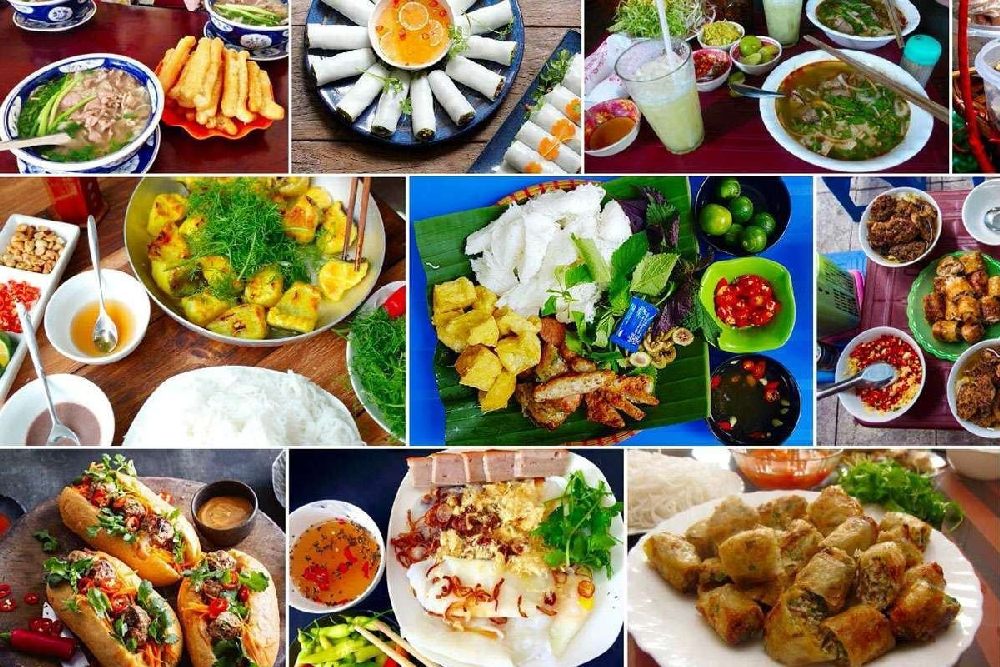
Hanoi is renowned for its rich culinary heritage, offering a diverse range of dishes that are sure to delight food lovers. The city’s cuisine is characterized by its fresh ingredients, balanced flavors, and unique combinations of herbs, spices, and sauces. A visit to Hanoi wouldn’t be complete without indulging in some of its iconic dishes.
- Pho: Perhaps the most famous Vietnamese dish, pho is a flavorful noodle soup made with beef or chicken, fresh herbs, and a savory broth. You can find pho everywhere in Hanoi, from street stalls to upscale restaurants.
- Bun Cha: A Hanoi specialty, bun cha consists of grilled pork patties served with vermicelli noodles, fresh herbs, and a tangy dipping sauce. It’s often accompanied by crispy spring rolls for a delicious meal.
- Banh Mi: This Vietnamese sandwich is a fusion of French and Vietnamese culinary traditions, featuring a crispy baguette filled with various ingredients like pate, cold cuts, pickled vegetables, and fresh cilantro.
- Egg Coffee (Ca Phe Trung): A unique Hanoi creation, egg coffee is made with robust Vietnamese coffee, egg yolk, condensed milk, and sugar. It’s whipped into a creamy, frothy concoction that’s both rich and sweet—a must-try for coffee lovers.
Hanoi’s food scene extends beyond these iconic dishes, offering a wide range of street food, local specialties, and fine dining options that reflect the city’s diverse culinary influences.
6. Enjoy a Water Puppet Show

Water puppetry is a traditional Vietnamese art form that dates back over a thousand years, originating from the rice paddies of the Red River Delta. This unique style of puppetry takes place on a water stage, with puppets controlled by puppeteers hidden behind a screen. The puppets, carved from wood and lacquered, are brought to life as they glide and dance across the water’s surface.
The Thang Long Water Puppet Theatre, located near Hoan Kiem Lake, is one of the best places in Hanoi to experience this captivating performance. The shows typically depict scenes from Vietnamese folklore, legends, and rural life, accompanied by live traditional music and singing. The colorful puppets and engaging storytelling make it a delightful experience for audiences of all ages.
Attending a water puppet show is not just a form of entertainment; it’s a cultural experience that offers insight into Vietnam’s rich artistic traditions and the creativity of its people. The lively atmosphere, skilled puppetry, and vibrant music make it a memorable highlight of any visit to Hanoi.
Also Read: Discover Vietnam’s Top 10 Secret Treasures
7. Explore the Hanoi Opera House
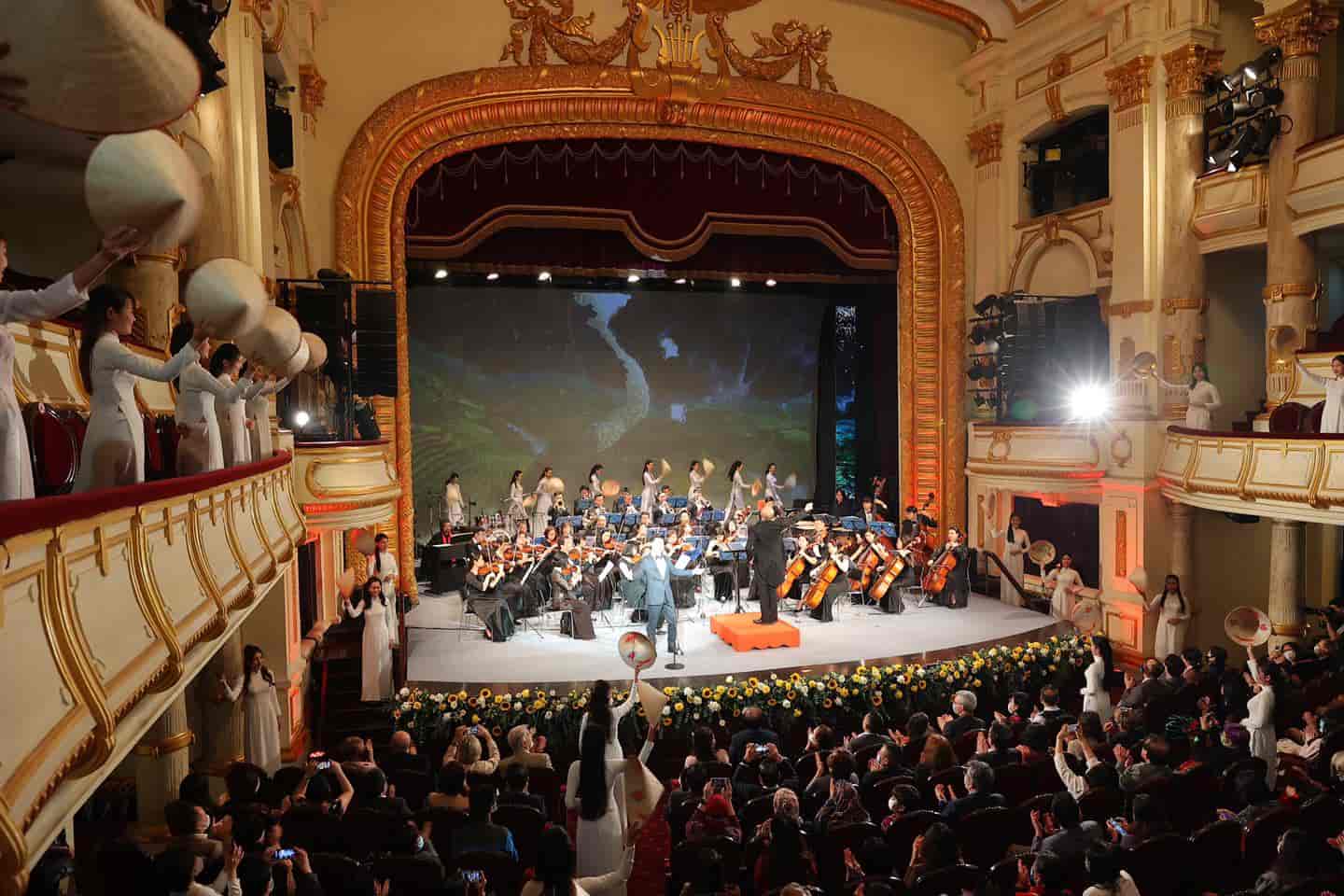
The Hanoi Opera House is a magnificent example of French colonial architecture and a cultural landmark in the heart of Hanoi. Built in 1911, the Opera House was modeled after the Palais Garnier in Paris, showcasing ornate balconies, grand columns, and a stunning façade that reflects its European influences. The building’s elegant design and historical significance make it a must-visit for those interested in architecture and the arts.
Inside, the Hanoi Opera House boasts a lavish interior with marble floors, sweeping staircases, and a grand auditorium that seats over 600 people. The venue hosts a wide range of performances, including classical concerts, opera, ballet, and traditional Vietnamese music and dance shows. Attending a performance here is a unique opportunity to experience the city’s vibrant cultural scene and witness world-class artistry in a historic setting.
For those who prefer to explore during the day, the Opera House also offers guided tours that provide insight into its history, architectural details, and the role it has played in Hanoi’s cultural life over the years. Whether you’re an art enthusiast or simply looking to admire the grandeur of this iconic building, the Hanoi Opera House is a must-see.
8. Shop at Dong Xuan Market
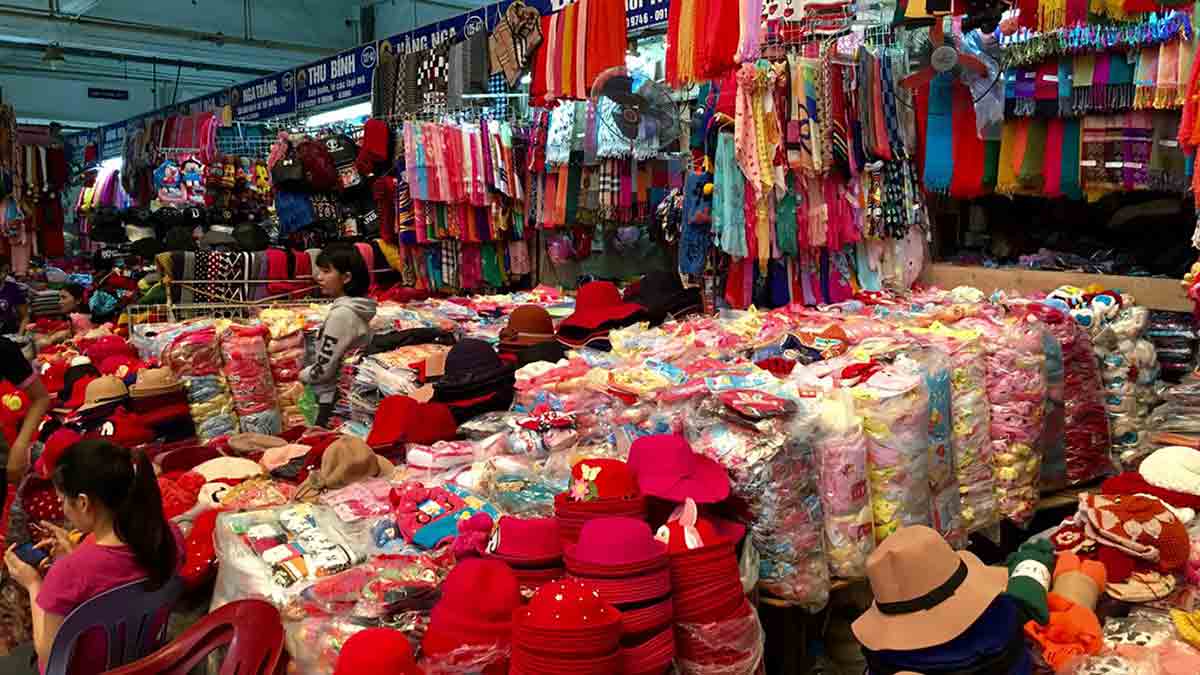
Dong Xuan Market is the largest indoor market in Hanoi and a bustling hub of commerce and daily life. Located in the Old Quarter, the market has been a vital part of Hanoi’s trade scene since its establishment in 1889. It’s a place where locals shop for everything from fresh produce and seafood to clothing, electronics, and household goods.
The market’s ground floor is a sensory overload of sights and smells, filled with stalls selling fresh fruits, vegetables, spices, and meats. As you move up to the higher floors, you’ll find an array of goods including textiles, accessories, souvenirs, and more. It’s an excellent place to shop for traditional Vietnamese products such as silk scarves, handicrafts, and embroidered items.
Bargaining is a common practice at Dong Xuan Market, so don’t hesitate to negotiate prices to get the best deals. In addition to shopping, the market also offers a variety of local food stalls where you can sample authentic Vietnamese dishes and snacks. Dong Xuan Market provides a fascinating glimpse into the daily lives of Hanoians and is a great place to experience the local culture up close.
Also Read: Immersive Experiences in Vietnam
9. Wander Around West Lake
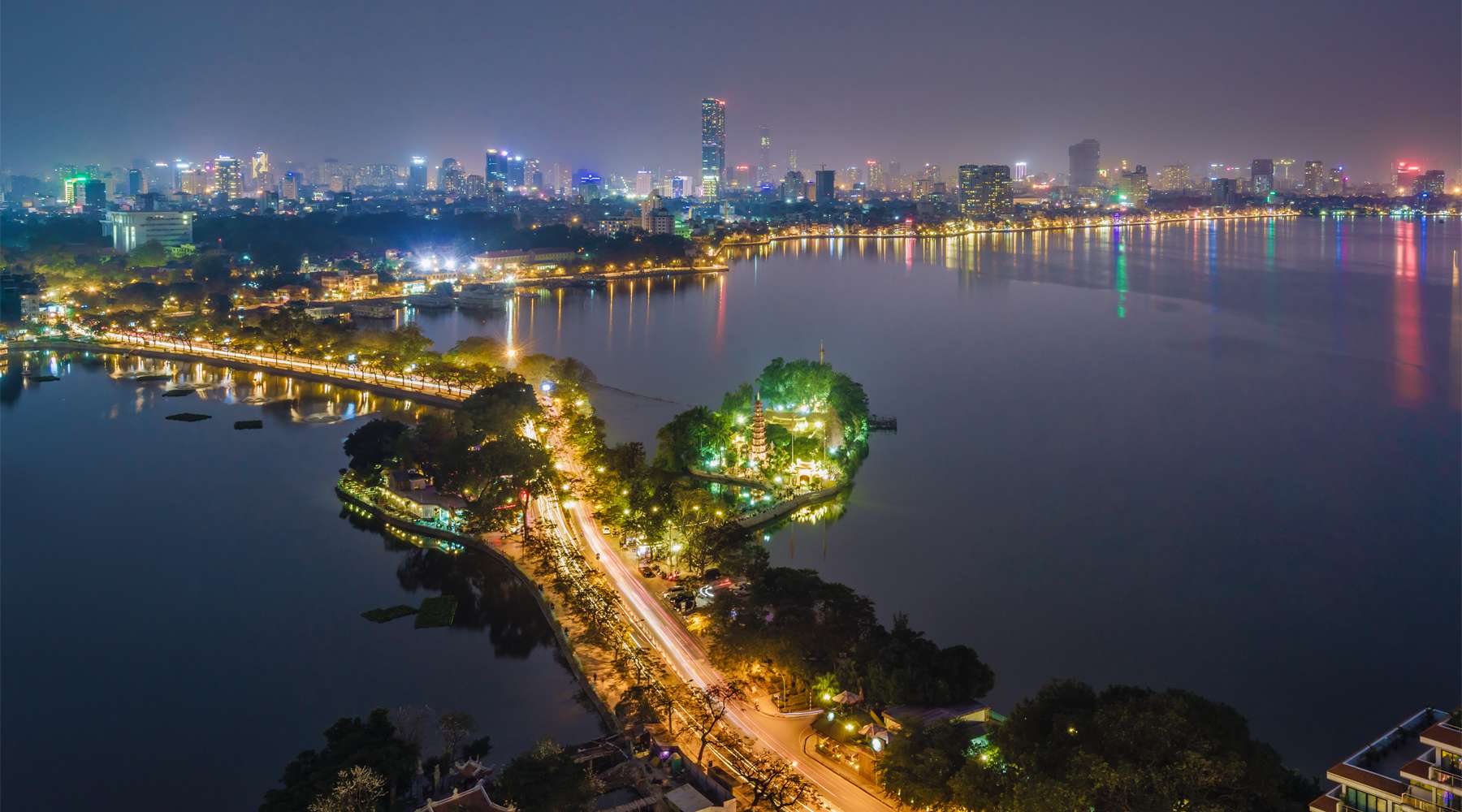
West Lake, known as “Hồ Tây” in Vietnamese, is the largest lake in Hanoi and a popular recreational area for both locals and visitors. Covering an area of over 500 hectares, the lake offers a peaceful escape from the city’s bustling streets. It’s a beautiful spot for leisurely walks, cycling, and enjoying the scenic views of the water and surrounding greenery.
The lake’s shoreline is dotted with cafes, restaurants, and upscale residences, making it a vibrant area to explore. You can rent a bike and ride along the lake’s perimeter, stopping at various points of interest such as the Lotus Temple and Quan Thanh Temple, both of which are steeped in history and offer insight into the local culture.
One of the highlights of West Lake is the Tran Quoc Pagoda, the oldest Buddhist temple in Hanoi, which sits on a small island near the southern shore. This stunning pagoda, with its striking red tower, is a serene place to visit and provides a spiritual atmosphere amidst the natural beauty of the lake. West Lake is also a fantastic spot to enjoy a meal with a view, with many restaurants offering lakeside dining where you can savor both local and international cuisine.
10. Visit the Vietnam Museum of Ethnology

The Vietnam Museum of Ethnology is a must-visit for anyone interested in learning about the country’s diverse cultural heritage. Located a short drive from the city center, the museum provides an in-depth look at the 54 ethnic groups that make up Vietnam’s population. Through a variety of exhibits, the museum showcases the unique customs, traditions, and lifestyles of these different communities.
Inside the museum, you’ll find displays featuring traditional clothing, artifacts, tools, and household items used by various ethnic groups. The museum’s collection includes detailed dioramas and models that illustrate daily life, rituals, and ceremonies, providing visitors with a comprehensive understanding of Vietnam’s rich cultural tapestry.
One of the highlights of the museum is the outdoor area, which features full-scale replicas of traditional houses from different regions of Vietnam. These include stilt houses, longhouses, and communal houses, each carefully constructed to reflect the architectural styles and building techniques of the ethnic groups they represent. Visitors can enter these houses to get a firsthand experience of how people live in different parts of the country.
The Vietnam Museum of Ethnology is not only educational but also engaging, offering interactive exhibits and activities that are suitable for all ages. It’s an excellent place to gain insight into the diverse cultural landscape of Vietnam and appreciate the country’s rich heritage.
Also Read: Uncover Vietnam
Plan Your Hanoi Adventure with Star Vacations
Hanoi is a city that promises endless discoveries and unforgettable memories. Whether you’re interested in history, culture, or cuisine, Hanoi has something for everyone. Let Star Vacations help you plan your perfect trip to Hanoi. Contact us today at 9582254235 for personalized travel advice and bookings. Your Hanoi adventure awaits!

